Search Results for Tag: biodiversity
Rio’s romance with renewable resources
Author and pictures: Kerstin Schnatz
Cups made from corn or electricity from sugar cane: Rio is eager these days to show that it can be environmentally friendly. The city is hosting the United Nations conference on Sustainable Development – better known as Rio+20. While the official part is only starting on Wednesday (June 20) the congress venue is already open for preparatory meetings and non-governmental events.
The Brazilian government is trying to make a point, it seems, of just how much it values the use of renewable resources such as corn or sugarcane. Indeed, Brazil is well known as a biofuel-country: The standard blend cars run on consists of up to 25 percent of biofuel for example. Even the Brazilian airline that flew us in bragged about its green commitment in the inflight magazine. The carrier plans to operate a domestic flight on biofuel especially for Rio+20.
Whilst renewable resources may emit less CO2 than fossil fuels, depending on how they are processed and transported, they can of course also create a lot of problems – monocultures, conflict between food and fuel production or soil degradation to name just a few.
Face to face with the tiger
Dieter Hoffmann of Harapan Rainforest knows what a reporter likes to see. “Are you interested in some fresh footprints or photos of a Sumatran tiger,” he asked. Of course I am! Harapan Rainforest has installed a few camera traps in the forest. Sometimes monkeys are fooling around with cameras, because they have learned that there’s something behind the lens. But every now and then a Sumatran tiger crosses one of these cameras and sneeks a peek.
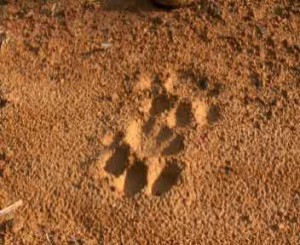 We walked to one of those cameras. And yes, there were footprints. I hardly knew what to do with my emotions. The prints were fresh, Dieter said. There was a tiger right here, just a few hours ago. My first thought: “Brilliant!” I’m a reporter, I’m always looking for a stunning picture. But right after that first thought my instincts came in: “Are you crazy?!” I thought. What on earth am I doing here on the favorite path of a real Tiger? That’s dangerous! I don’t want to end up in a tiger’s stomach!
We walked to one of those cameras. And yes, there were footprints. I hardly knew what to do with my emotions. The prints were fresh, Dieter said. There was a tiger right here, just a few hours ago. My first thought: “Brilliant!” I’m a reporter, I’m always looking for a stunning picture. But right after that first thought my instincts came in: “Are you crazy?!” I thought. What on earth am I doing here on the favorite path of a real Tiger? That’s dangerous! I don’t want to end up in a tiger’s stomach!
But Axel, my camera-man, could hardly believe his luck and headed forward into the jungle as if looking for nothing but his pet dog.
To make a long story short: We didn’t meet a tiger and we are still not eaten by a tiger. But the photos of the camera trap revealed what really happend: At 9.40 in the morning a female Sumatran tiger passed the camera. We followed – in a safe distance – close to five a clock in the afternoon.
Bizarre but valuable: Top 10-list of new species 2011 draws attention to biodiversity
Short time ago the International Institute for Species Exploration at Arizona State University anounced their picks for the top 10 new species described in 2011. It’s the fifth time in a row that attention-grabbing species have been nominated to open the world’s eyes for “the biodiversity crisis and the unsung species explorers and museums who continue a 250-year tradition of discovering and describing the millions of kinds of plants, animals and microbes with whom we share this planet,” as Quentin Wheeler, an entomologist who directs the International Institute for Species Exploration at ASU, said.
When you have a look at the gallery below you will have to admit that this year’s list is quite exquisit. It’s members come from Brazil, Myanmar, the Dutch Caribbean, South Africa, Papua New Guinea, Spain, Borneo, Nepal, China and Tanzania. You will find a sneezing monkey there, a beautiful but venomous jellyfish, an underworld worm and a fungus named for a popular TV cartoon character.
The nominations had to be “species that capture our attention because they are unusual or because they have traits that are bizarre,” said Mary Liz Jameson, an associate professor at Wichita State University who chaired the international selection committee. At the institute’s website you will also find a Google world map that pinpoints the location for each of the top 10 new species.
Mapping the world’s plant and animal life
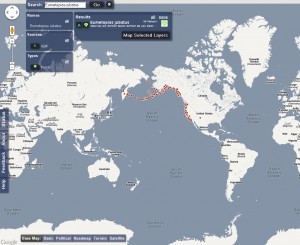 This can become one of the most interesting projects for people who are interested in nature, biodiversity and, of course, the impact climate change on our environment. A team of researchers from Yale and the University Colorado at Boulder have an unbelievable idea. Their plan is to map the distribution of all plant and animal life on earth. This May they have started a demo-version of their Web-based “Map of Life“.
This can become one of the most interesting projects for people who are interested in nature, biodiversity and, of course, the impact climate change on our environment. A team of researchers from Yale and the University Colorado at Boulder have an unbelievable idea. Their plan is to map the distribution of all plant and animal life on earth. This May they have started a demo-version of their Web-based “Map of Life“.
The google maps based tool will be growing constantly, the researchers say. Right now it presents over 25,000 different species of terrestrial vertebrates and North American freshwater fish. But even in this state of being the idea comes crystal clear where this map is going to be within the next months. “Map of Life” uses data from field guides, museums, citizen scientists and groups like the Global Biodiversity Information Facility, the International Union for the Conservation of Nature and the World Wildlife Fund.
Right now it’s possible for the users to search by species, viewing a map of all known distributions, or to view a list of all species records in a specific range of any spot on the map.
The developers also provide a blog to inform about the newest developments on the map.
Drylands and protecting biodiversity
Several studies have proven that biodiversity is crucial to keeping our climate healthy and strong, but that’s especially true in drylands. A new study from Ben-Gurion University takes a closer look at the relationship between biodiversity and the ability of an eco-system to do multiple things at a time – like store carbon and create nutrient pools (called multifunctionality).
How exactly does the relationship work? Eco-systems in drylands have a better chance of being multifunctional, which is very important for our climate, if there is rich plant biodiversity. And when increasingly warm temperatures make it impossible for those plants to survive, multifunctionality, too, suffers.
That’s no small discovery because 41% of the earth’s surface is made up of drylands. The study, which appeared in the journal Science, also reports that 38% of the global human population live on those drylands and depend on healthy eco-systems for their survival.





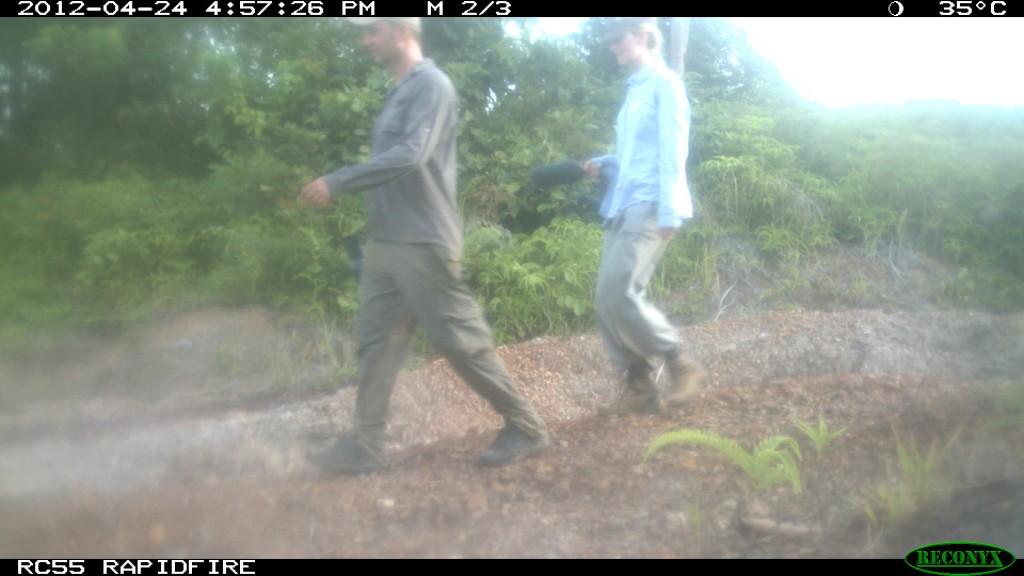
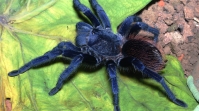

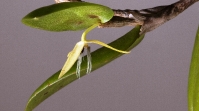
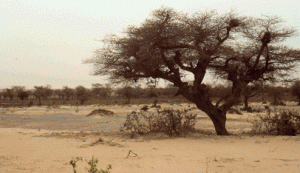




Feedback